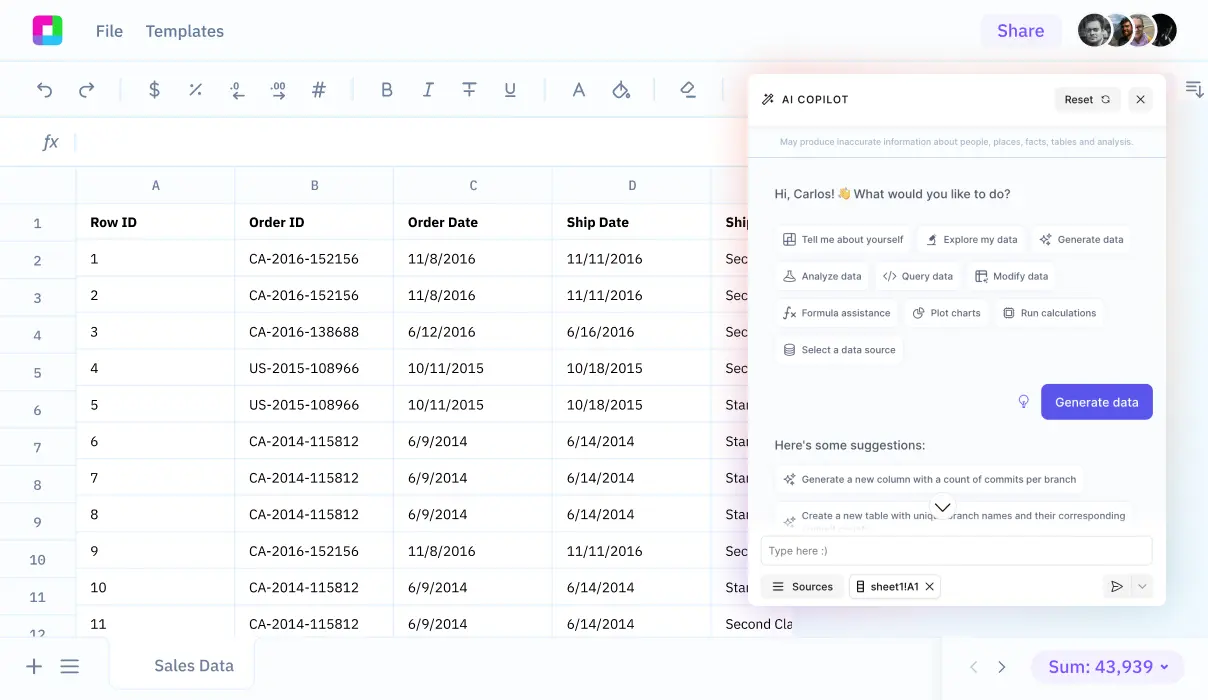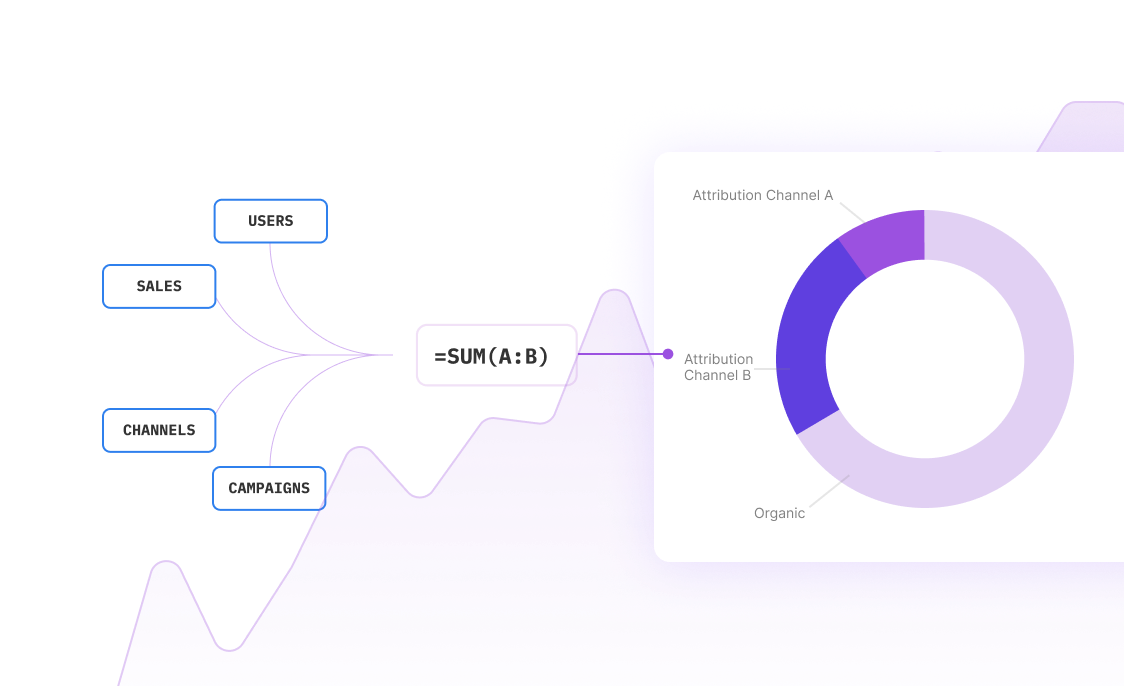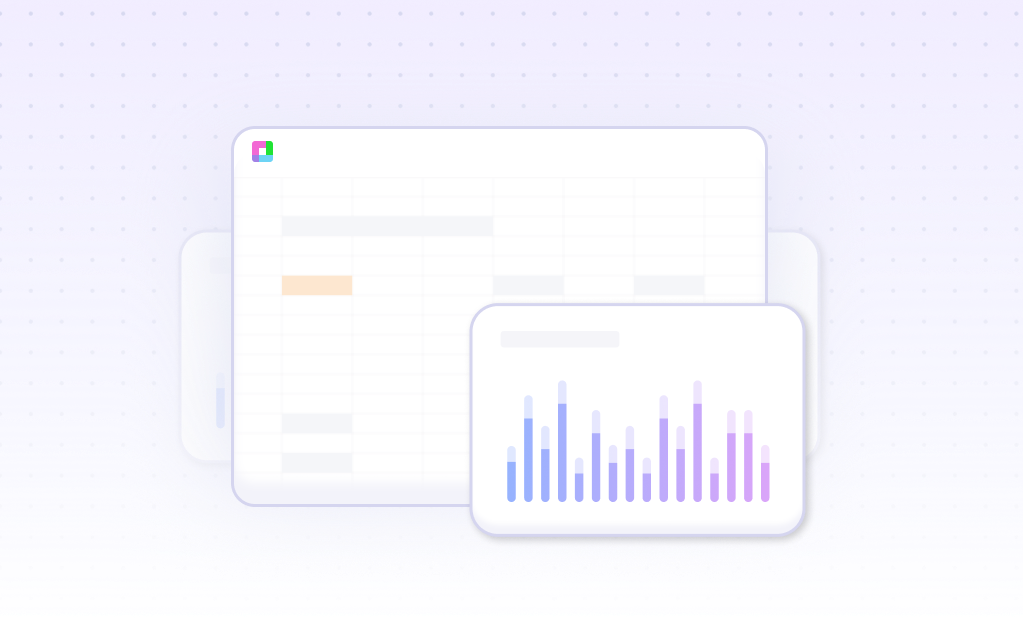
Introduction
Financial fraud analysis helps stakeholders detect irregularities in financial statements through metrics and analytical methods. Excel provides powerful tools for fraud detection, including aging analysis for overdue bills, Pareto charts for defect prioritization, Benford's law analysis, and box plots for outlier detection. However, Sourcetable offers an AI-powered alternative that requires no Excel expertise. This innovative platform automates spreadsheet tasks, generates complex formulas, and provides advanced data analysis through SQL and Python integration. Through voice commands and automated data cleaning, Sourcetable simplifies financial analysis for professionals at all skill levels. Discover how to leverage Sourcetable's AI capabilities for fraud detection at sourcetable.com/signup.
Why Sourcetable Is the Best Tool for Financial Fraud Analysis
Sourcetable revolutionizes financial fraud analysis by combining AI-powered spreadsheet capabilities with advanced fraud analytics. While Excel remains the standard for over a billion users, Sourcetable's AI integration enables faster, more accurate fraud detection and prevention in real-time.
Superior Speed and Accuracy
Sourcetable outperforms traditional Excel workflows in formula creation, data cleaning, and visualization - critical components of fraud analysis. Its AI-powered features minimize human error while accelerating the analysis of complex financial datasets, helping organizations reduce fraud-related losses more effectively.
Enhanced Fraud Detection Capabilities
Unlike basic Excel, Sourcetable's AI chatbot interface allows analysts to quickly identify suspicious patterns and automate fraud detection workflows. This powerful combination helps organizations maintain regulatory compliance while protecting their brand reputation through improved fraud prevention.
Seamless Integration
Sourcetable works alongside existing Excel and Google Sheets installations, enabling teams to enhance their current fraud detection tools without disrupting established processes. Its natural language processing capabilities make complex financial analysis accessible to both experts and non-technical users.
Benefits of Financial Fraud Analysis with Sourcetable
Financial fraud analysis delivers critical advantages for organizations. It enhances fraud detection, prevention, and identification of emerging patterns. This proactive approach enables strategic defense implementation and informed decision-making while improving operational efficiency.
Why Choose Sourcetable Over Excel
While both Sourcetable and Excel offer spreadsheet analytics, audit trails, calculators, charting, and multi-user collaboration, Sourcetable provides distinct advantages. Its AI-powered assistant streamlines data analysis, making it faster and more efficient than traditional Excel workflows.
Sourcetable's powerful data analysis capabilities extend to CSV file processing, data visualization, and organization. The platform's reliability, speed, and user-friendly interface make it an optimal choice for financial fraud analysis teams seeking enhanced analytical capabilities.
Financial Fraud Analysis Examples with Sourcetable
Machine learning approaches for financial fraud detection include k-Nearest Neighbors (KNN), Random Forests, and Neural Networks. These models, as reviewed by multiple researchers including Bin Sulaiman et al. (2022) and Ali et al. (2022), provide effective methods for detecting credit card fraud and other financial irregularities.
k-Nearest Neighbors Analysis
KNN algorithms analyze transaction patterns by comparing them to known fraudulent and legitimate cases, creating clusters of similar behavior to identify potential fraud.
Random Forests Detection
Random Forests combine multiple decision trees to detect fraud patterns, offering robust classification of suspicious financial activities through ensemble learning methods.
Neural Network Implementation
Neural Networks process complex transaction data through interconnected layers, learning sophisticated patterns to identify fraudulent financial behavior with high accuracy.
Financial Fraud Analysis Use Cases with Sourcetable
Real-Time Transaction Monitoring |
Analyze live transaction data streams using machine learning algorithms to detect anomalies and generate instant risk scores. Automated monitoring improves security while reducing manual review requirements. |
Historical Pattern Analysis |
Process historical transaction datasets to identify fraud patterns and establish baseline behavior profiles. Machine learning models improve pattern recognition accuracy over time through continuous learning. |
Automated Risk Assessment |
Generate automated risk scores through daily scheduled resolver runs that evaluate user features and transaction characteristics. Real-time scoring enables immediate response to suspicious activities. |
Internal Controls Gap Analysis |
Analyze transaction data and user behaviors to identify potential weaknesses in internal control systems. Machine learning applications help detect control gaps that could enable fraudulent activities. |
Scalable Fraud Detection |
Process increasing transaction volumes without additional staff by leveraging automated online queries and machine learning-powered applications. Cost-effective scaling maintains detection accuracy while improving operational efficiency. |
Frequently Asked Questions
What is financial fraud analysis and how does it work?
Financial fraud analysis uses statistical and machine learning techniques to identify potentially fraudulent transactions. The process involves training machine learning algorithms on historical data, which then learn to predict and flag suspicious transactions or user profiles that may indicate fraud.
What are the benefits of real-time fraud detection?
Real-time fraud detection prevents fraud by analyzing transactions as they occur. This is achieved by integrating fraud analytics into the transaction processing pipeline or by streaming transaction data through tools like Apache Kafka to fraud analytics systems using event processing capabilities.
How can Sourcetable be used for fraud analysis?
Sourcetable, an AI-powered spreadsheet, can analyze fraud data through its AI chatbot interface that responds to natural language commands. It connects to over 100 data sources and supports Python or SQL code for external integrations, while accelerating data cleaning, summarizing, and visualization tasks.
Conclusion
Excel offers powerful tools for financial fraud analysis, including ageing analysis to identify overdue bills, Pareto charts for defect prioritization, and Benford's law analysis to examine leading digit patterns. Box plots help detect outliers that may indicate fraudulent activity.
Sourcetable elevates this analysis by combining traditional spreadsheet functionality with AI capabilities. The platform processes large datasets quickly and accurately while reducing false positives. Its natural language interface and integration with over 100 data sources streamline the analysis process, making fraud detection more efficient and adaptable to new threats.
Start modernizing your financial fraud analysis with Sourcetable's AI-powered tools. Sign up now to experience the future of spreadsheet analysis.
Frequently Asked Questions
If you question is not covered here, you can contact our team.
Contact Us





